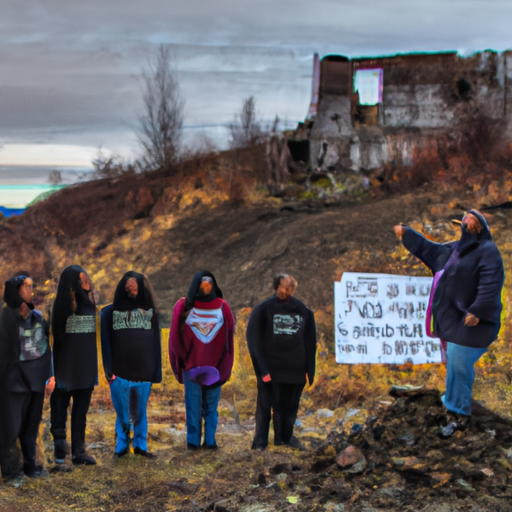Filling Gaps: The Answer to Indigenous GDP and Opioid Crisis?
The opioid crisis, which has largely affected the population on a global scale, has been causing severe impacts on socio-economic and health endemics. As I investigated the depths of this issue within Canada’s indigenous communities, I unearthed an insightful article from CityNews Halifax relating to a potential stride in tackling the opioid crisis in this vulnerable group. This forms the basis of today’s topic of discussion.
Understanding the Opioid Crisis in Canadian Indigenous Communities
Reports have shown that in Canada, the opioid crisis has been disproportionately affecting Indigenous communities more than non-Indigenous ones. Various Indigenous communities have noticed a surge in opioid-related deaths which is double – and in some regions even triple – the rates in non-Indigenous communities. The crisis, characterized by significant numbers of overdose deaths due to the misuse and addiction to opioid drugs, has perpetuated a vicious cycle of homelessness and crime in these communities.
Closing Infrastructure Gaps as a Possible Solution
As per the insightful article from CityNews Halifax, addressing infrastructure gaps might be a promising solution to this societal issue. According to a study shared by RBC, closing infrastructure gaps in Indigenous communities could significantly boost Indigenous GDP by up to 17 per cent. It could also alleviate the ongoing opioid crisis, advancing better living standards and potentially contributing to steadier health outcomes.
Key Points Shared in the Article
- Improving public infrastructure such as health centres, addiction treatment facilities, housing and roads could increase Indigenous GDP by up to 17 per cent by 2030.
- Measures to address the infrastructure gaps would lead to better health services and living conditions, potentially curbing the opioid crisis.
- The lack of access to naloxone, an opioid antagonist meant to reverse opioid overdoses, is one of the significant reasons behind the high opioid-related deaths in Indigenous communities.
Infrastructure Gaps – A Catalyst to the Opioid Crisis?
Addressing infrastructure gaps could play a significant role in curbing the opioid crisis as improved public infrastructure would mean more accessible healthcare services, including access to naloxone, improved housing, and poverty reduction. Some believe that a comprehensive support system resulting from improved infrastructure could just be the solution to the rampant opioid crisis plaguing the Indigenous communities.
Impoverished living conditions, significantly impacted by the lack of adequate infrastructure, increase the vulnerability of the Indigenous communities to the misuse and addiction to opioids. Therefore, addressing these gaps could also mean a reduction in homelessness and crime related to substance use.
The goal of closing the infrastructure gaps extends beyond increasing the GDP. It is genuinely about enhancing the quality of life, health, and wellbeing of these communities. Addressing infrastructure needs would provide a promising start to sustainable solutions to overcome the opioid crisis in Indigenous communities.
A Call to Action?
While this is only a first step, it amplifies the need for more concern, efforts, and resources to be directed towards Indigenous communities’ welfare. Collider efforts from all stakeholders; the Government, the health sector, community leaders, Indigenous organizations, are required. It is a clarion call for addressing such societal issues stemming from the lack of suitable infrastructure, with the opioid crisis being atop the list.
Final Thought
In conclusion, while the opioid crisis in Indigenous communities is deeply and disastrously rooted, solutions might be on the horizon. Addressing infrastructure gaps and enhancing necessary services, according to the report highlighted by CityNews Halifax, propose a promising step towards tackling the opioid crisis in Canadian Indigenous communities. This potential answer encapsulates a key takeaway – focusing on basic human rights, such as access to adequate housing and healthcare, can play a vital role in not just increasing the GDP but more importantly, improving the standard of living and the quality of life in these communities amidst the opioid crisis.


